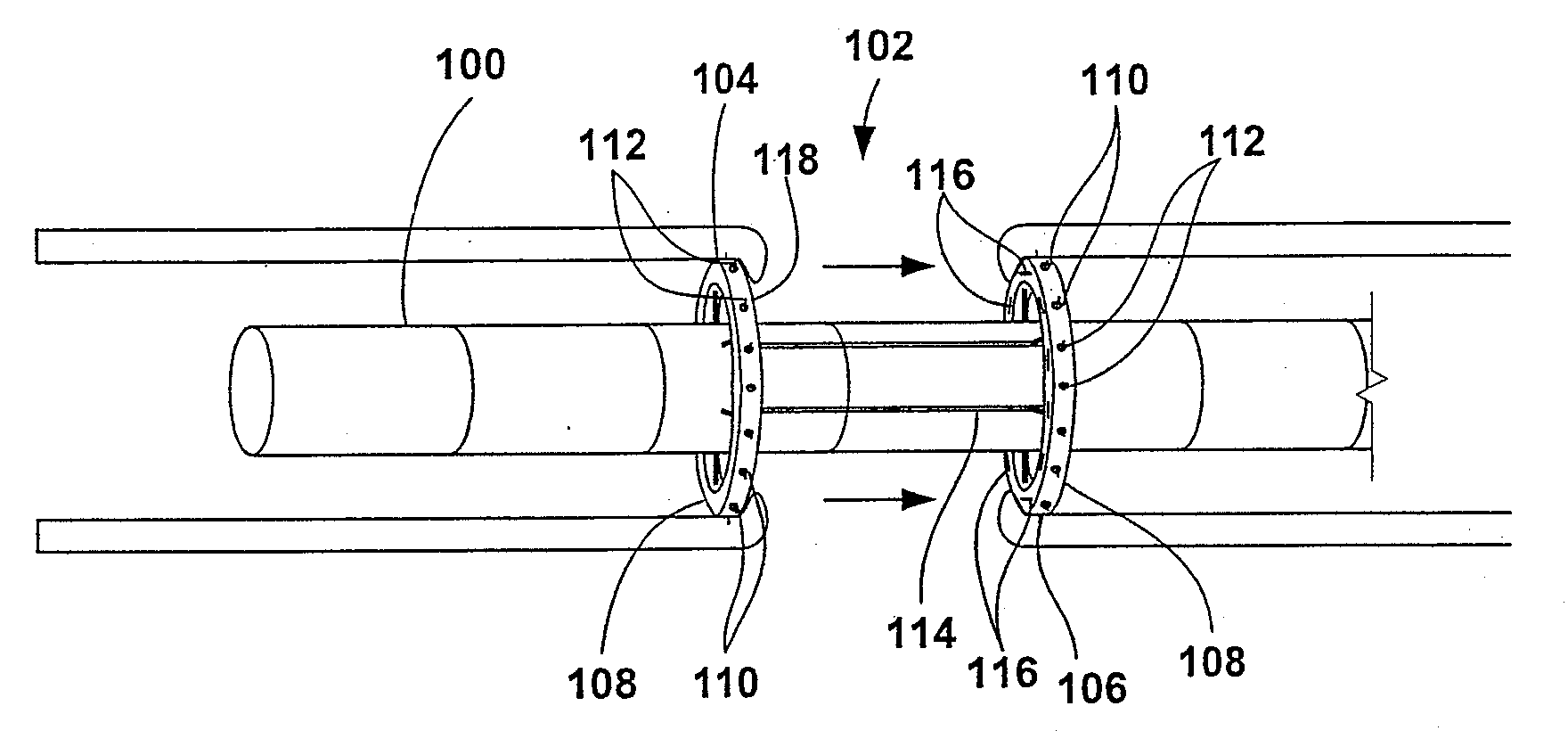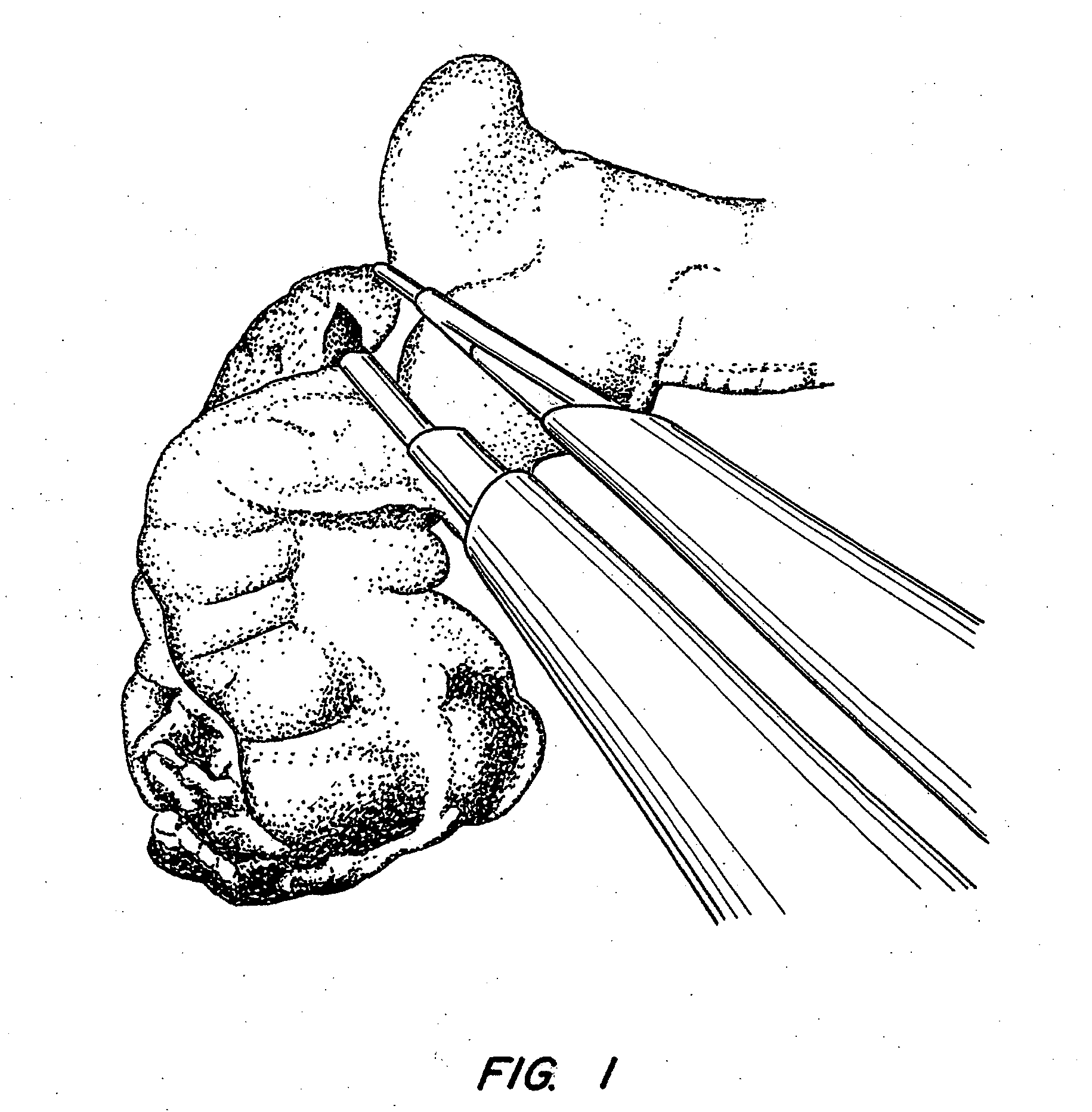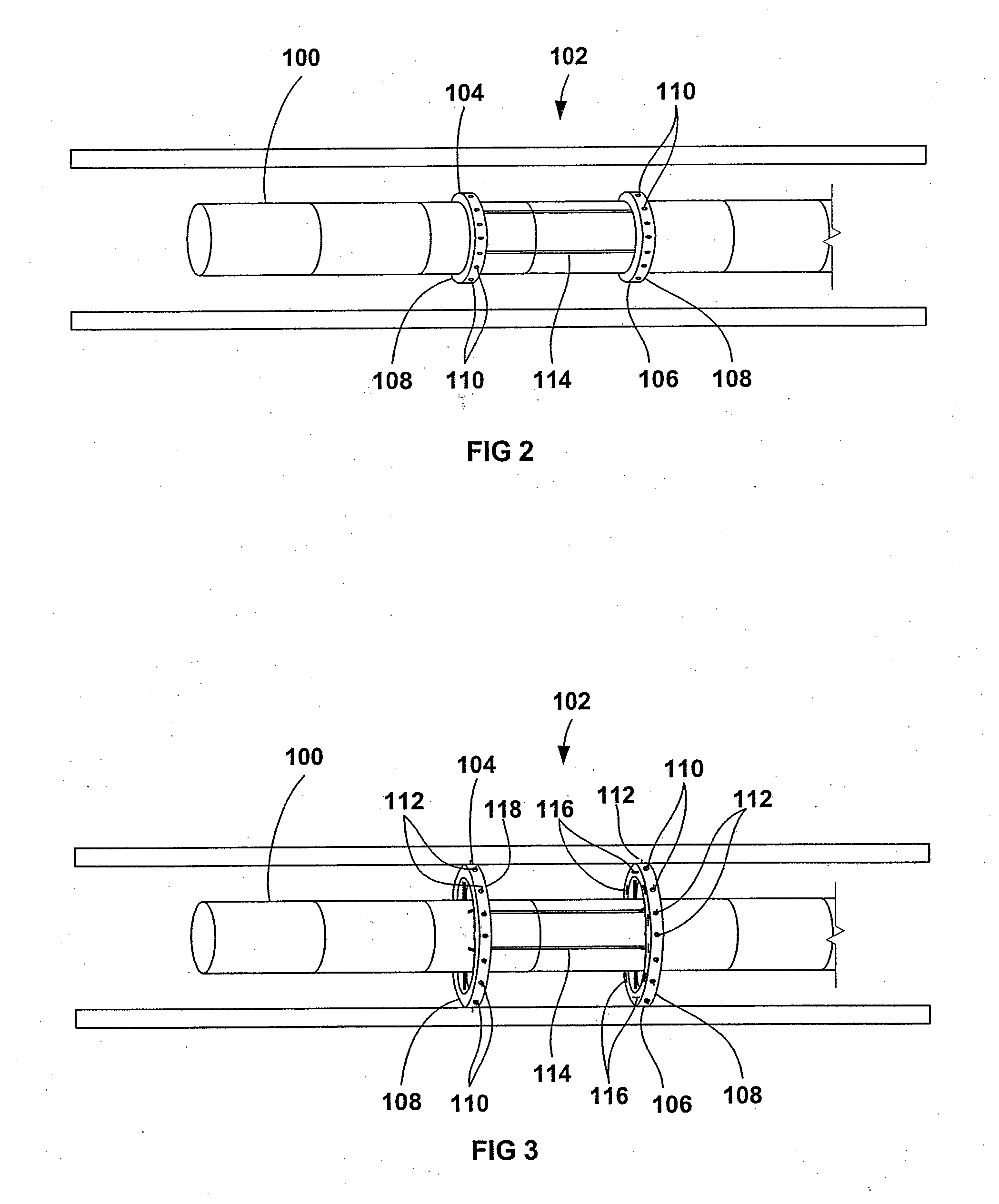Apparatus and method for endoscopic colectomy
a colectomy and endolumenal technology, applied in the field of surgical methods and equipment, can solve the problems of leaking malignant cells to the periphery, preventing the spread of malignant cells, and prior art approaches that do not provide separation of colon and omentum, so as to prevent leakage of malignant cells, clean surgical margins without residual disease, and prevent such leakage.
- Summary
- Abstract
- Description
- Claims
- Application Information
AI Technical Summary
Benefits of technology
Problems solved by technology
Method used
Image
Examples
first embodiment
[0052]FIG. 6 shows the steerable endoscope 100 of the present invention. The endoscope 100 has an elongate body 103 with a manually or selectively steerable distal portion 105 and an automatically controlled proximal portion 107. The selectively steerable distal portion 105 can be selectively steered or bent up to a full 180 degree bend in any direction. A fiberoptic imaging bundle 113 and one or more illumination fibers 115 extend through the body 103 from the proximal end 111 to the distal end 109. Alternatively, the endoscope 100 can be configured as a video endoscope with a miniaturized video camera, such as a CCD camera, positioned at the distal end 109 of the endoscope body 103. The images from the video camera can be transmitted to a video monitor by a transmission cable or by wireless transmission. Optionally, the body 103 of the endoscope 100 may include one or two instrument channels 117, 119 that may also be used for insufflation or irrigation. The body 103 of the endosco...
second embodiment
[0056]FIG. 7 shows the endoscope 100 of the present invention. As in the embodiment of FIG. 6, the endoscope 100 has an elongate body 103 with a selectively steerable distal portion 105 and an automatically controlled proximal portion 107. The steering control 122 is integrated into proximal handle 121 in the form or one or two dials for selectively steering the selectively steerable distal portion 105 of the endoscope 100. Optionally, the electronic motion controller 140 may be miniaturized and integrated into proximal handle 121, as well. In this embodiment, the axial motion transducer 150 is configured with a base 154 that is attachable to a fixed point of reference, such as the surgical table. A first roller 156 and a second roller 158 contact the exterior of the endoscope body 103. A multi-turn potentiometer 160 or other motion transducer is connected to the first roller 156 to measure the axial motion of the endoscope body 103 and to produce a signal indicative of the axial po...
embodiment 200
[0065]As mentioned above, such a segmented body may be actuated by a variety of methods. A preferable method involves the use of electromechanical motors individually mounted on each individual segment to move the segments relative to one another. FIG. 12 shows a preferable embodiment 200 having motorized segmented joints. Each segment 192 is preferably comprised of a backbone segment 202, which also preferably defines at least one lumen running through it to provide an access channel through which wires, optical fibers, air and / or water channels, various endoscopic tools, or any variety of devices and wires may be routed through. The backbone segment may be made of a variety of materials which are preferably biocompatible and which provide sufficient strength to support the various tools and other components, e.g., stainless steel. Although much of the description is to an individual segment 192, each of the segments 192 are preferably identical, except for the segment (or first fe...
PUM
 Login to View More
Login to View More Abstract
Description
Claims
Application Information
 Login to View More
Login to View More - R&D
- Intellectual Property
- Life Sciences
- Materials
- Tech Scout
- Unparalleled Data Quality
- Higher Quality Content
- 60% Fewer Hallucinations
Browse by: Latest US Patents, China's latest patents, Technical Efficacy Thesaurus, Application Domain, Technology Topic, Popular Technical Reports.
© 2025 PatSnap. All rights reserved.Legal|Privacy policy|Modern Slavery Act Transparency Statement|Sitemap|About US| Contact US: help@patsnap.com



